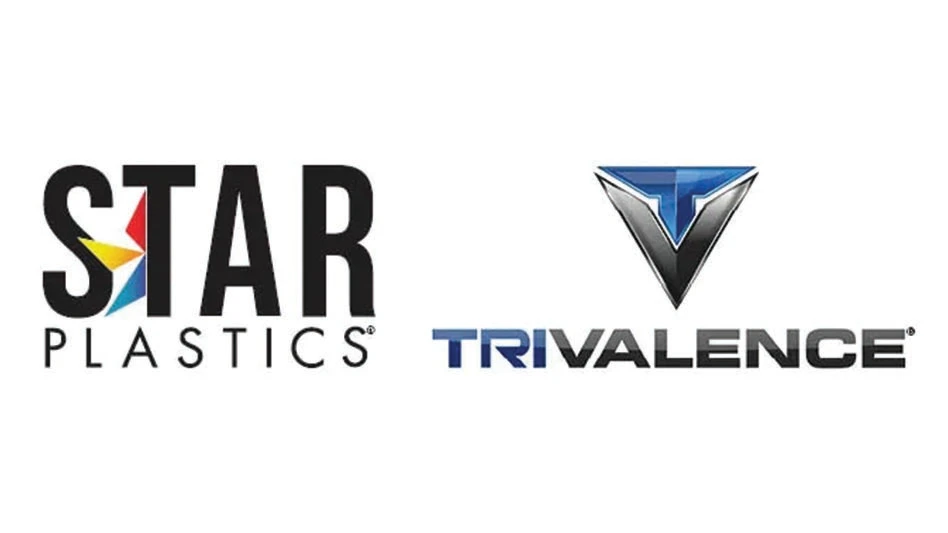 When incidents of laptop computer or cellphone batteries overheating or bursting into flames are reported, the media and the general public take interest in a phenomenon that could “happen to any of us.”
When incidents of laptop computer or cellphone batteries overheating or bursting into flames are reported, the media and the general public take interest in a phenomenon that could “happen to any of us.”
The combustion of batteries in an office or home setting is a relatively rare event, as manufacturers, standards organizations and regulatory agencies all play a role in setting and maintaining stringent safety practices.
Nonetheless, the metallic elements, acids and catalysts within batteries have varying degrees of volatility and different ways of reacting to factors such as extreme heat.
Of particular concern to recyclers is how some of these batteries may react to conditions found in scrap metal stockpiles. Toward the middle and at the bottom of these stockpiles, temperatures may reach a point where lithium-ion batteries will overheat, smolder and cause a large fire.
Prevention first
The lead-acid battery has been the mainstay of automotive electrical supply for decades, and automobile dismantlers and shredder operators have long-standing practices in place to divert these batteries into well-established recycling channels.
As hybrid and electric vehicles have begun to gain market share in the last several years, makers of these vehicles and their batteries have likewise begun to explore the end-of-life options for these sometimes sizable power units.
Toyota, makers of the Prius, one of the best-selling hybrid vehicles for several years running, says it has built its own recovery network to collect end-of-life hybrid vehicle (HV) batteries for recycling. Toyota initially used nickel-metal-hydride (NiMH) batteries in the Prius but has been introducing models with lithium-ion batteries since late 2014.
In its 2013 sustainability report, Toyota says it had collected 30,000 end-of-life HV batteries and recovered the nickel, cobalt and rare earth elements they contained. “It is expected that tens of thousands of end-of-life HV batteries will be generated by the middle of the 2020s,” Toyota states in its 2013 sustainability report.
In some cases, the company says, the batteries are not recycled for their metallic elements but instead are reused.
Harvesting the large batteries that power hybrid and electric vehicles before they reach a shredder stockpile already is becoming a widely adopted practice for auto dismantlers and recyclers alike. “At present the large batteries have value and as such are generally recycled to maximize value,” says Jay Robinovitz, president and chief operating officer of St. Louis-based Alter Trading Corp., which operates 12 auto shredding plants in the United States.
Water, sand or foam?
Firefighters approaching the scene of a smoking or burning auto shredder stockpile have to make a quick but informed decision as to how to best suppress the fire.
Organizations such as the National Fire Protection Association (NFPA) and the Fire Protection Research Foundation (FPRF), both based in Quincy, Massachusetts, have taken part in studies to determine best practices in snuffing out fires involving lithium-ion batteries.
A 110-page report published in June 2013 titled “Best Practices for Emergency Response to Incidents Involving Electric Vehicles Battery Hazards” focused on incidents where large lithium-ion vehicle batteries were involved in a fire contained to the vehicle itself. The report was sponsored by a consortium of vehicle and battery manufacturers and two federal agencies and conducted by the FPRF.
For an electric vehicle fire, current best practices call for a steady “fog” stream of water sprayed from a 1.5-to-1.75-inch diameter hose, with firefighters “advancing toward the vehicle with a wide pattern (60-degree fog) from uphill/upwind if possible.”
In tests run by the FPRF on an electric vehicle fire, firefighters used “a 1.75-inch diameter hose line fed by a private hydrant [that] discharged approximately 125 gallons of water per minute at 75 psi.”
Responders to a shredder stockpile fire, however, may not view a small lithium-ion battery as the main determinant as to how to suppress the fire, in part because of the presence of residual oils, several types of plastic and polyurethane foam in larger amounts.
“Once a fire is started, firefighters need to be more concerned about what is fueling the fire rather than what ignited it, which itself may have been consumed by the fire and is no longer an ignition source,” says David Wagger, director of environmental management at the Institute of Scrap Recycling Industries (ISRI), Washington.
Even though lithium-ion batteries are widely present in this application, removing them is on track to be as universally accomplished as what occurs with lead-acid batteries. Less easy to spot for shredding plant operators may be smaller lithium-ion batteries coming “along for the ride” with an ELV auto hulk.
David Wagger, director of environmental management at the Institute of Scrap Recycling Industries (ISRI), Washington, agrees that recyclers are properly handling hybrid and electric vehicle batteries.
In terms of what may be in a shredder stockpile, “The lithium batteries in question come from ordinary household items, such as portable power tools and cordless phones that end up in feedstock piles,” says Wagger. “They could well have been purposefully hidden in the trunk of a vehicle or [within] other scrap metal.”
Cellphones in particular can get wedged between seat cushions or in any number of other places in an abandoned end-of-life vehicle (ELV). Some $20 billion worth of lithium-ion batteries are sold worldwide each year, according to Boston-based Lux Research Inc., and many of these are in smartphones and other mobile devices.
A diverse shredder stockpile—one that includes items beyond auto hulks—simply offers chances for small batteries to be present. “There are many small sources that include smoke detectors, alarm battery backup systems, emergency exit lights and many small appliance applications,” Robinovitz says, listing several items that shredder operators try to intercept.
A snowball's chance
The conditions to cause a lithium-ion battery to overheat are not easily obtained and thus have to be “just right” (or “just wrong,” depending on one’s point of view).
An article from April 2015 posted on the LiveScience.com website (www.livescience.com/50643-watch-lithium-battery-explode.html) summarizes some of the findings from an academic study published in the journal Nature Communications on lithium-ion battery combustion.
Study co-author Paul Shearing of University College London in the United Kingdom is quoted in the LiveScience article as saying that hundreds of millions of lithium-ion batteries are produced yearly, but catastrophic failures (such as severe melting or explosions) are rare. He notes, nonetheless, that the U.S. Consumer Product Safety Commission has enacted 43 product recalls for defective lithium-ion batteries since 2002.
In normal temperature ranges, “Batteries can blow up or melt when internal electrical components short-circuit, when mechanical problems crop up after a fall or an accident or when they are installed incorrectly,” according to the article, which paraphrases Shearing.
“At the heart, all of these failures occur because one portion of the battery gets too hot and can’t cool down quickly enough, creating a chain reaction that generates more and more heat,” the article continues. “It’s kind of this snowball process that we call thermal runaway,” Shearing tells LiveScience.
Shearing and his colleagues tested batteries at 250 degrees Celsius (482 degrees Fahrenheit) and found that some batteries indeed experienced thermal runaway (melting and boiling), while others were designed with “internal safety features” that prevented the snowball effect.
Of interest to shredder operators is whether stockpiles can produce temperatures sufficiently high enough to trigger the thermal runaway process in a lithium-ion battery located in an auto hulk or other piece of shredder feedstock.
Although specific studies on auto shredder feedstock may be lacking, studies on stockpiles of coal, scrap tires and other materials point to time, temperature, density, mass and moisture levels as factors to be measured and considered.
Tires are not designed to burn until temperatures of 500 to 550 degrees Celsius, yet scrap tire stockpiles have occurred all too often. In many cases the fires started at massive, years-old stockpiles.
Under most conditions, auto shredding plant operators do not want long-standing stockpiles. It may turn out the potential presence of lithium-ion batteries provides another reason to keep those stockpiles short-lived and modest in size.
Don't super-size it
At the 2015 Bureau of International Recycling (BIR) World Recycling Convention, George Adams of SimsAdams Recycling, Anaheim, California, advised fellow members of BIR’s Shredder Committee to consider the lithium-ion battery a fire hazard.
Adams told attendees of the committee meeting, held in Dubai, United Arab Emirates, in May 2015, that from 1980 to 2000, shredder operators had “few issues with fires,” but added that things are different today because of so many batteries.
Stockpile fires, he said, are a safety issue, a financial issue and a community relations issue. “If you get a fire on the bottom of the pile, you cannot [easily] put it out,” he declared, “and it’s going to be noticed by everybody in the community.” Considering the reach of the Internet, he added, “People will know if you’ve had multiple fires.”
Fires, Adams said, can be disastrous to a business: “They give our [industry] a black eye and they are unsafe for employees.”
Adams urged shredder operators to avoid building large stockpiles. His own company, he said, is limiting stockpiles to 250 tons—“small enough to tear apart that pile and put out a fire.”
Alter’s Robinovitz says sound stockpile management practices and communication within the industry can combine to keep fire outbreaks to a minimum.
“I feel that with the added scrutiny all operations are under today, coupled with better best management practices, fires are smaller and less frequent than those in the past,” he comments.
Like Adams, however, Robinovitz says the Internet can compound the negative effects that result when a fire does occur. “I can see how it may appear to be more common as communication moves around the globe at a much more broad and rapid pace than ever before,” he says.
Fortunately for recyclers, shredder stockpile fires remain infrequent enough that they are unlikely to become the focus of a comprehensive study. Even individual incidents, which often result in no injuries or damage, may not warrant sufficient investigation to prove whether a lithium-ion battery caused the fire. “I have seldom seen definitive findings in stockpile fires,” says Robinovitz, adding, “The size and complexity of the piles makes finding the source very challenging.”
ISRI’s Wagger says lithium-ion battery awareness, however, can be part of a shredder operator’s “source control program.” He says, “Such programs should include cooperating with and educating dismantlers and other suppliers to remove lithium batteries from ELVs and other scrap materials prior to delivery.”
The author is editor of Recycling Today and can be contacted at btaylor@gie.net.
Get curated news on YOUR industry.
Enter your email to receive our newsletters.

Explore the October 2015 Issue
Check out more from this issue and find your next story to read.
Latest from Recycling Today
- LG details recycling activities
- Algoma EAF is up and running
- Toyota-Tsusho completes acquisition of Radius Recycling
- CATL, Ellen MacArthur Foundation aim to accelerate circular battery economy
- Commentary: Expanded polystyrene is 98 percent air, 2 percent plastic and 100 percent misunderstood
- AMCS appoints general manager for North America
- How tariffs, regulations affect LIBs recycling in US, EU
- Schwan Cosmetics introduces packaging free of styrene, ABS






